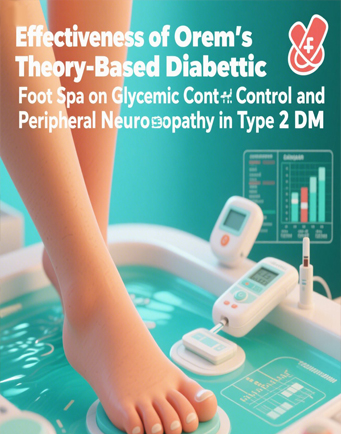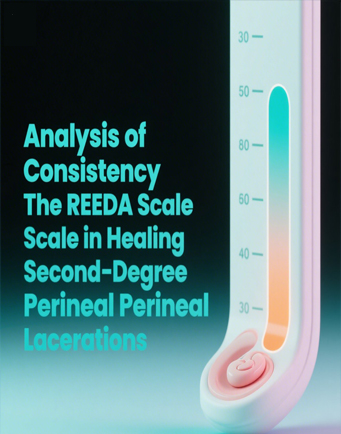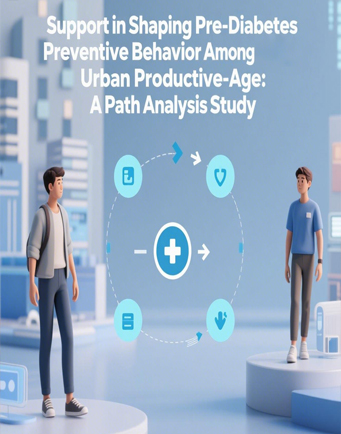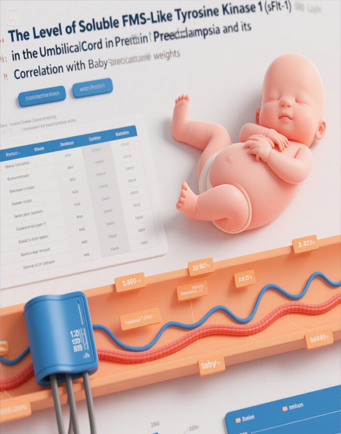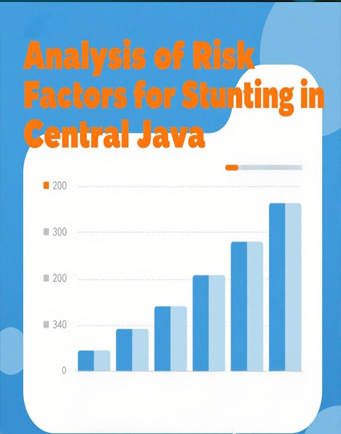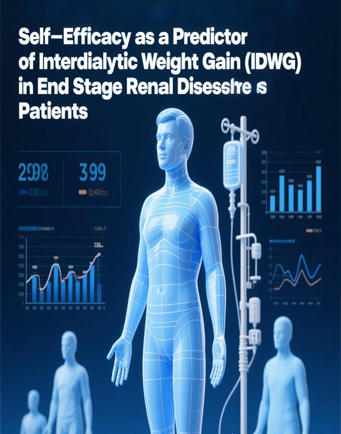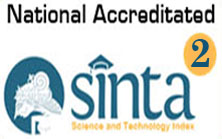Community Knowledge and Attitudes Regarding Filariasis: Insights from Papua, Indonesia

Downloads
The rising incidence of filariasis cases necessitates heightened vigilance, particularly given the limited public awareness about this disease. This study aims to explore community knowledge and attitudes regarding filariasis in Jayawijaya Regency, Papua. Utilizing a sequential explanatory mixed-methods design, the research population comprised all household heads in Itanggen Village, Wolo District. A total of 34 household heads participated as informants, representing each family unit. Data collection employed structured questionnaires followed by in-depth interviews. Findings revealed that 3 filariasis cases was found, accounting for 38.2% (n=13) of respondents demonstrated good knowledge about filariasis, while 61.8% (n=21) showed inadequate understanding. Regarding preventive attitudes, 55.9% (n=19) exhibited positive attitudes toward filariasis prevention, whereas 44.1% (n=15) displayed less favorable attitudes. However, there was no significant relationship between community knowledge and filariasis case (p value=0.729). Also, there was no significant relationship between community attitude and filariasis incident (p value=0.830). These results highlight critical gaps in filariasis knowledge despite moderately positive preventive attitudes, suggesting the need for targeted health education interventions in this endemic region. The study provides valuable baseline data for public health planning in Papua's filariasis control programs.
Azzahra, M. K., Shafwah, D. A., Sondakh, C. S., & Adriyani, R. (2024). A Review of Bed Nets Usage and Sewerage Conditions As Risk Factors for Lymphatic Filariasis in Developing Countries. Jurnal Kesehatan Lingkungan, 16(1), 89–100. https://doi.org/10.20473/jkl.v16i1.2024.89-100
Babu, B. V., & Kar, S. K. (2020). Community participation in lymphatic filariasis elimination programmes: Current status and future prospects. Tropical Medicine and International Health, 25(1), 5–18. https://doi.org/10.1111/tmi.13335
Dhewantara, P. W., Lau, C. L., Mamun, S., Wangdi, K., & Soares, R. J. (2022). Spatial heterogeneity of lymphatic filariasis in Papua, Indonesia: A cross-sectional study. PLOS Neglected Tropical Diseases, 16(8), e0010675. https://doi.org/10.1371/journal.pntd.0010675
Gass, K., de Rochars, M. B., Boakye, D., Bradley, M., Fischer, P. U., Gyapong, J., ..., & Lammie, P. (2021). A multicenter evaluation of diagnostic tools to define endpoints for programs to eliminate bancroftian filariasis. PLOS Neglected Tropical Diseases, 15(5), e0008935. https://doi.org/10.1371/journal.pntd.0008935
Haynes-Brown, T. K. (2023). Using Theoretical Models in Mixed Methods Research: An Example from an Explanatory Sequential Mixed Methods Study Exploring Teachers’ Beliefs and Use of Technology. Journal of Mixed Methods Research, 17(3), 243–263. https://doi.org/10.1177/15586898221094970
Hussain, M. A., Sarker, A. R., Wadood, M. M., & Afroz, A. (2021). Psychosocial impact of lymphatic filariasis morbidity and its determinants in rural communities of Bangladesh. Tropical Medicine and Health, 49(1), 1–12. https://doi.org/10.1186/s41182-021-00348-6
Ichimori, K., King, J. D., Engels, D., Yajima, A., Mikhailov, A., Lammie, P., & Ottesen, E. A. (2020). Global programme to eliminate lymphatic filariasis: The processes underlying programme success. PLOS Neglected Tropical Diseases, 14(12), e0008997. https://doi.org/10.1371/journal.pntd.0008997
Irish, S. R., Al-Amin, H. M., Paulin, H. N., Mahmood, A. S., Khan, R. K., & Muraduzzaman, A. K. M., Lenhart, A. (2020). Molecular xenomonitoring for Wuchereria bancrofti in Culex quinquefasciatus in Bangladesh. Parasites & Vectors, 13(1), 1–9. https://doi.org/10.1186/s13071-020-04072-8
Krentel, A., Fischer, P. U., & Weil, G. J. (2021). A review of factors influencing the motivation of community drug distributors towards elimination of lymphatic filariasis. Parasites & Vectors, 14(1), 1–12. https://doi.org/10.1186/s13071-021-04936-7
Krentel, A., Gyapong, J. O., Ogundahunsi, O., Amuyunzu-Nyamongo, M., & McFarland, D. A. (2022). Health system factors affecting implementation of integrated neglected tropical disease elimination programs. PLOS Neglected Tropical Diseases, 16(3), e0010235. https://doi.org/10.1371/journal.pntd.0010235
Krentel, A., Gyapong, M., Mallya, S., Boadu, N. Y., Amuyunzu-Nyamongo, M., Stephens, M., & McFarland, D. A. (2017). Review of the factors influencing the motivation of community drug distributors towards the control and elimination of neglected tropical diseases (NTDs). PLoS Neglected Tropical Diseases, 11(12), 1–23. https://doi.org/10.1371/journal.pntd.0006065
Lau, C. L., Sheridan, S., Ryan, S., Roineau, M., Andreosso, A., Fuimaono, S., & Graves, P. M. (2022). Environmental determinants of lymphatic filariasis in Papua New Guinea: A cross-sectional analysis. PLOS Neglected Tropical Diseases, 16(5), e0010423. https://doi.org/10.1371/journal.pntd.0010423
Lau, C. L., Meder, K., Mayfield, H. J., Kearns, T., McPherson, B., Naseri, T., Thomsen, R., Hedtke, S. M., Sheridan, S., Gass, K., & Graves, P. M. (2020). Lymphatic filariasis epidemiology in Samoa in 2018: Geographic clustering and higher antigen prevalence in older age groups. PLoS neglected tropical diseases, 14(12), e0008927. https://doi.org/10.1371/journal.pntd.0008927
Lee, J., & Ryu, J. S. (2019). Current status of parasite infections in Indonesia: A literature review. Korean Journal of Parasitology, 57(4), 329–339. https://doi.org/10.3347/kjp.2019.57.4.329
Ministry of Health Republic of Indonesia. (2021). Indonesia Health Profile 2020. Jakarta: Ministry of Health Republic of Indonesia
Ministry of Health Republic of Indonesia. (2023). Indonesia Health Profile 2022. Jakarta: Ministry of Health Republic of Indonesia
Molyneux, D. H., Savioli, L., & Engels, D. (2020). Neglected tropical diseases: progress towards addressing the chronic pandemic. The Lancet, 389(1), 312–325. https://doi.org/10.1016/S0140-6736-4
Person, B., Addiss, D. G., Bartholomew, L. K., Meijer, C., Pou, V., & van den Borne, B. (2022). “Can it be that god does not remember me”: A qualitative study on the psychological distress, suffering, and coping of Dominican women with chronic filarial lymphedema and elephantiasis. International Health, 14(1), 72–82. https://doi.org/10.1093/inthealth/ihab023
Rebollo, M. P., Sambou, S. M., Thomas, B., Biritwum, N. K., Jaye, M. C., Kelly-Hope, L., & Bockarie, M. J. (2023). Vector ecology and environmental drivers of lymphatic filariasis transmission in the Philippines. Parasites & Vectors, 16(1), 1–14. https://doi.org/10.1186/s13071-023-05711-6
Santriana, S., Ramadona, A. L., & Gunawan, G. (2024). The Influence of Population Behavior and Settlement Environment on the Incidence of Filariasis in Sigi Regency, Central Sulawesi, Indonesia. Jurnal Kesehatan Lingkungan, 16(2), 118–124. https://doi.org/10.20473/jkl.v16i2.2024.118-124
Schrauf, R. (2017). Mixed Methods Designs for Making Cross-Cultural Comparisons. Journal of Mixed Methods Research, 12(4), 477–494. https://doi.org/10.1177/1558689817743109
Singh, V., Chaudhary, S. S., Kaushal, S. K., Singh, L. D., Maroof, M., & Tripathi, S. (2024). Socio-demographic determinants and risk factors for Lymphatic Filariasis in Bundelkhand region of Uttar Pradesh: A Community based Case-Control Study. Indian Journal of Community Health, 36(6), 807–812. https://doi.org/10.47203/IJCH.2024.v36i06.010
Tchuenté, L. A. (2021). Control of soil-transmitted helminths and schistosomiasis: The way forward. Infectious Diseases of Poverty, 10(1), 1–12. https://doi.org/10.1186/s40249-021-00841-4
Wamai, R. G., Kahn, J., McGloin, J., & Ziaggi, G. (2020). Lymphatic filariasis in the 21st century: Current status and future perspectives. PLOS Neglected Tropical Diseases, 14(11), e0008842. https://doi.org/10.1371/journal.pntd.0008842
Wayangkau, E. C., Budiyono, B., Raharjo, M., & Martini, M. (2025). Adherence to mass drug administration and environmental factors related to lymphatic filariasis incidence: A case-control study in endemic area, Papua, Indonesia. Narra Journal, 5(1), e2143. https://doi.org/10.52225/narra.v5i1.2143
Weil, G. J., Bogus, J., Christian, M., Dubray, C., Djuardi, Y., Fischer, P. U., & Supali, T. (2023). Multicomponent interventions for sustainable lymphatic filariasis elimination. New England Journal of Medicine, 388(20), 1899–1910. https://doi.org/10.1056/NEJMoa2200319
Weiland, H. M., Bouchery, T., Mahanty, S., & King, C. L. (2023). Immunopathogenesis of filarial lymphedema. Frontiers in Immunology, 14, 1155270. https://doi.org/10.3389/fimmu.2023.1155270
WHO. (2022). Lymphatic filariasis: Status of endemicity in Southeast Asia. Weekly Epidemiological Record, 97(45), 561–572. Retrieved from: https://www.who.int/news-room/fact-sheets/detail/lymphatic-filariasis
WHO. (2023). Global programme to eliminate lymphatic filariasis: Progress report. WHO. Retrieved from: https://www.who.int/publications/i/item/who-wer-9940-565-576
Zoure, H. G., Wanji, S., Noma, M., Amazigo, U. V., Diggle, P. J., Tekle, A. H., & Remme, J. H. (2021). The geographic distribution of Loa loa in Africa: Results of large-scale implementation of the Rapid Assessment Procedure for Loiasis (RAPLOA). PLOS Neglected Tropical Diseases, 15(1), e0008823. https://doi.org/10.1371/journal.pntd.0008823
Copyright (c) 2025 JURNAL INFO KESEHATAN

This work is licensed under a Creative Commons Attribution-NonCommercial-ShareAlike 4.0 International License.
Copyright notice
Ownership of copyright
The copyright in this website and the material on this website (including without limitation the text, computer code, artwork, photographs, images, music, audio material, video material and audio-visual material on this website) is owned by JURNAL INFO KESEHATAN and its licensors.
Copyright license
JURNAL INFO KESEHATAN grants to you a worldwide non-exclusive royalty-free revocable license to:
- view this website and the material on this website on a computer or mobile device via a web browser;
- copy and store this website and the material on this website in your web browser cache memory; and
- print pages from this website for your use.
- All articles published by JURNAL INFO KESEHATAN are licensed under the Creative Commons Attribution 4.0 International License. This permits anyone to copy, redistribute, remix, transmit and adapt the work provided the original work and source is appropriately cited.
JURNAL INFO KESEHATAN does not grant you any other rights in relation to this website or the material on this website. In other words, all other rights are reserved.
For the avoidance of doubt, you must not adapt, edit, change, transform, publish, republish, distribute, redistribute, broadcast, rebroadcast or show or play in public this website or the material on this website (in any form or media) without appropriately and conspicuously citing the original work and source or JURNAL INFO KESEHATAN prior written permission.
Permissions
You may request permission to use the copyright materials on this website by writing to jurnalinfokesehatan@gmail.com.
Enforcement of copyright
JURNAL INFO KESEHATAN takes the protection of its copyright very seriously.
If JURNAL INFO KESEHATAN discovers that you have used its copyright materials in contravention of the license above, JURNAL INFO KESEHATAN may bring legal proceedings against you seeking monetary damages and an injunction to stop you using those materials. You could also be ordered to pay legal costs.
If you become aware of any use of JURNAL INFO KESEHATAN copyright materials that contravenes or may contravene the license above, please report this by email to jurnalinfokesehatan@gmail.com
Infringing material
If you become aware of any material on the website that you believe infringes your or any other person's copyright, please report this by email to jurnalinfokesehatan@gmail.com.


